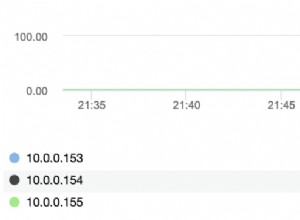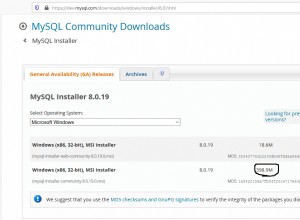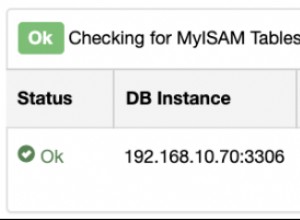Non puoi fare un aggregato di un aggregato Max(Sum()) , non è valido in SQL, indipendentemente dal fatto che tu stia utilizzando l'ORM o meno. Invece, devi unire il tavolo a se stesso per trovare il massimo. Puoi farlo usando una sottoquery. Il codice seguente mi sembra giusto, ma tieni presente che non ho qualcosa su cui eseguirlo, quindi potrebbe non essere perfetto.
from django.db.models import Subquery, OuterRef
annotation = {
'AcSum': Sum('intensity')
}
# The basic query is on Relation grouped by A and Category, annotated
# with the Sum of intensity
query = Relation.objects.values('a', 'b__category').annotate(**annotation)
# The subquery is joined to the outerquery on the Category
sub_filter = Q(b__category=OuterRef('b__category'))
# The subquery is grouped by A and Category and annotated with the Sum
# of intensity, which is then ordered descending so that when a LIMIT 1
# is applied, you get the Max.
subquery = Relation.objects.filter(sub_filter).values(
'a', 'b__category').annotate(**annotation).order_by(
'-AcSum').values('AcSum')[:1]
query = query.annotate(max_intensity=Subquery(subquery))
Questo dovrebbe generare SQL come:
SELECT a_id, category_id,
(SELECT SUM(U0.intensity) AS AcSum
FROM RELATION U0
JOIN B U1 on U0.b_id = U1.id
WHERE U1.category_id = B.category_id
GROUP BY U0.a_id, U1.category_id
ORDER BY SUM(U0.intensity) DESC
LIMIT 1
) AS max_intensity
FROM Relation
JOIN B on Relation.b_id = B.id
GROUP BY Relation.a_id, B.category_id
Potrebbe essere più efficace eliminare il join in Subquery utilizzando una funzione specifica del back-end come array_agg (Postgres) o GroupConcat (MySQL) per raccogliere il Relation.ids raggruppati nella query esterna. Ma non so quale backend stai usando.




